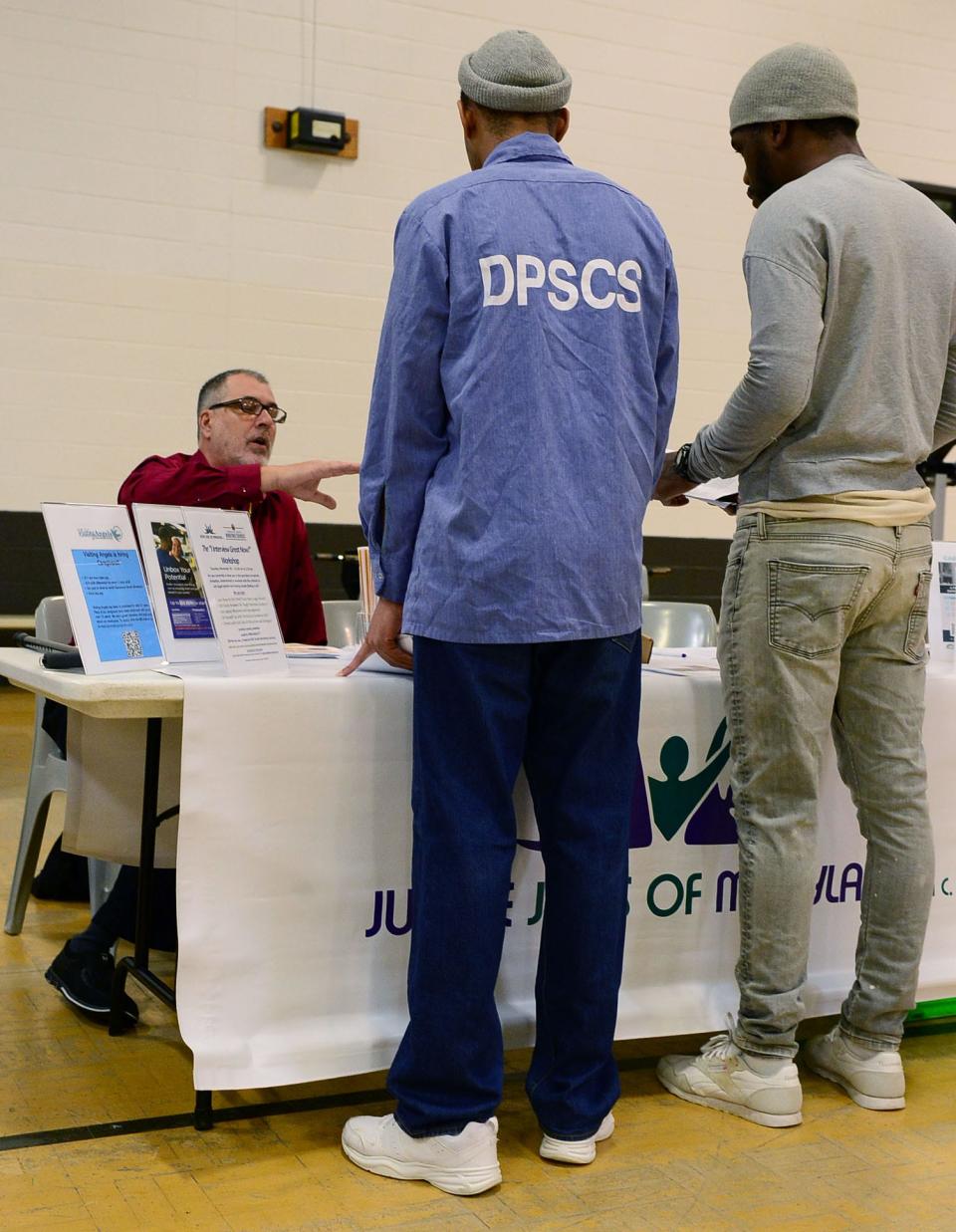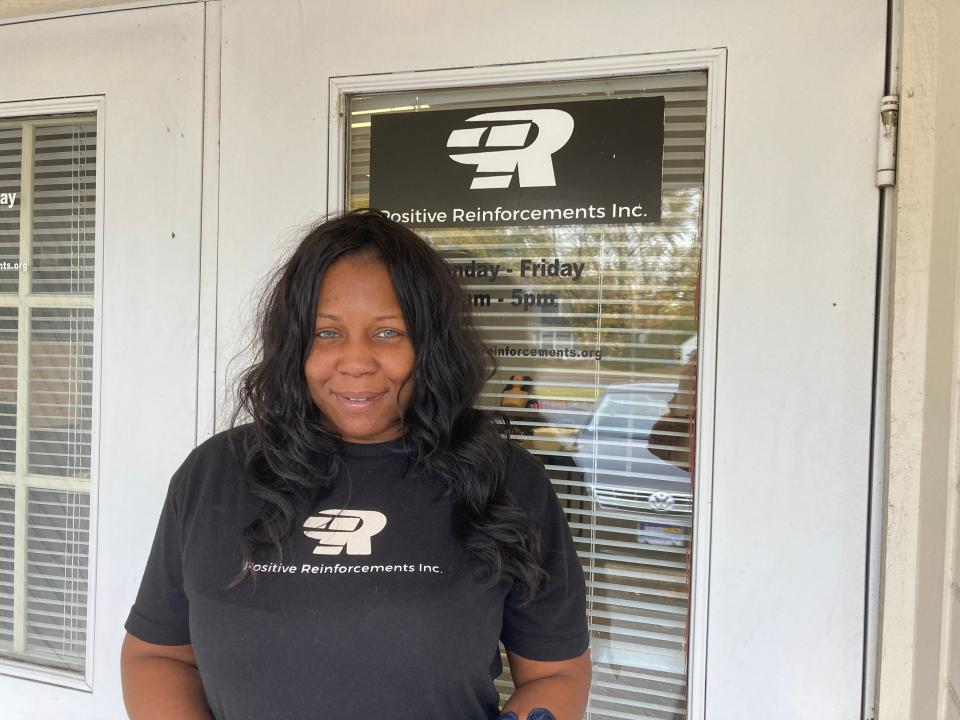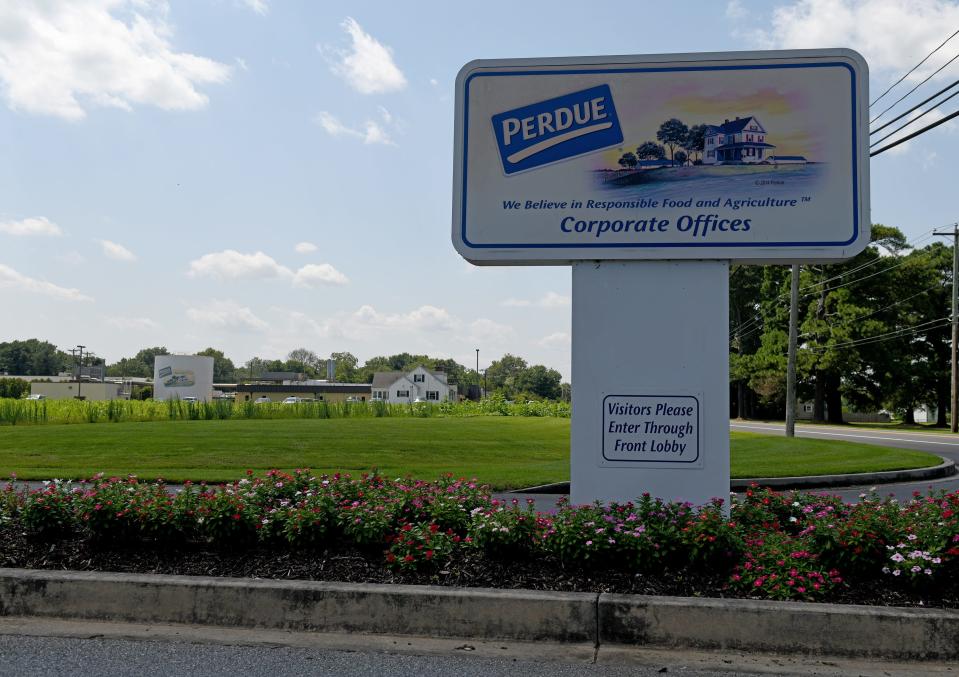Investigation: Where do inmates in Maryland prisons go as they finish their time?
The Maryland department that oversees the state’s 13 correctional facilities showcases “local reentry agreements” with nearly half the state’s counties, but an investigation into those memorandums show the overwhelming majority of state prisoners are staying put.
The local detention centers, tasked in the agreements to facilitate a state inmate’s societal reentry, have only occasionally performed that function. Several jurisdictions with agreements, including Washington County where there are both state and county facilities, have never had a state prisoner return to their planned home county detention center to prepare for release.
With thousands of individuals returning from state correctional institutions each year and thousands of state dollars spent each month to incarcerate an individual in a Maryland facility, the state’s policies of reentry are opaque and require examination in order to reduce recidivism rates, which hover around 30%.

This report relies on information obtained through a public information act request, a subsequent appeal process totaling about six months, and a ruling from the state’s Public Information Act Compliance Board that said the Department of Public Safety and Correctional Services violated the Public Information Act by failing to issue a final response to the request for public records.
The department’s secretary, Carolyn Scruggs, who Gov. Wes Moore selected to lead the department in January, was not made available for an interview for this article on the process. She formerly led the department’s reentry efforts as an assistant secretary.
More: PHOTOS: Career and Reentry Fair offers returning citizens a chance
Subway in Somerset County
It’s about a 2-mile walk along a cornfield-adjacent road to get to the Subway restaurant from the gates of the state’s most populous prison, Eastern Correctional Institution, or ECI, in Somerset County’s Westover on Maryland’s Eastern Shore. That Subway, located in a gas station, is one of the closest establishments of any kind to the prison.
An individual leaving ECI would have to venture about 4 miles into the county seat of Princess Anne to receive services from Aprilstar Alexander’s nonprofit Positive Reinforcements, which helps former prisoners readjust to society.

And from Western Correctional Institution, the maximum-security state prison in Allegany County’s Cumberland, it’s over 100 miles to get to the nearest actual subway station. From one of Hagerstown’s several state prisons, it would be about an hour ride to the Metro.
“It’s not like they can just call a Lyft,” said Vanessa Bright, executive director of the nonprofit Maryland Reentry Resource Center, who taught in some of the state’s correctional institutions.
An inquiry to the Department of Public Safety and Correctional Services yielded a part of the statute that addresses an individual’s reentry. Walks by cornfields into town or expensive Uber drives back to a metropolitan area were not a part of the policy for individuals finishing time.
A department employee cited the policy as confidential under “General Provision Article Subsection 4-352 of the Annotated Code of Maryland,” but a spokesperson provided a part of the case management manual, OPS.230.0005, which governs release procedures and is not otherwise available publicly online.
“The case management specialist shall: when an inmate is within 30 days of release, notify the inmate’s family or friend of the release date and attempt to arrange for pick-up from the Maryland Correctional Transportation Unit (MCTU) transfer hub closest to the release location nearest the inmate’s home plan,” the policy states.
Under the policy, reentry would occur with the aid of family or friend at the state facility closest to home. Meaning if an individual did their time in the Roxbury Correctional Institution near Hagerstown, but they called Annapolis home, the department would transfer the onetime prisoner the 75 miles to the hub nearest home, likely the Jessup Correctional Institution in Anne Arundel County.
“I’ve seen the state really have an effort of making people go back to where they were,” said Bill Gaertner, founder and executive director of Gatekeepers, a Hagerstown-based organization involved with helping individuals transition back to society after incarceration.
More: Corderman bills would send inmates back to where they came from on release
Baltimore City, county where most individuals return
The data sent from the department on Oct. 5 in response a March 2 inquiry showed Baltimore City and Baltimore County as the top two jurisdictions selected for an individual's return in fiscal year 2023.
Baltimore City was picked by 1,170 individuals as their “Home Plan” jurisdiction and 457 individuals selected Baltimore County. These rankings reflected what the publicly available data of the last seven years shows — the Baltimore jurisdictions are the top selected destinations of return for state prisoners readying for release.
What has fluctuated from the historic data to the most recent data is the third highest category. In every year from 2016 to 2022, “No home plan” registers as the third leading category for individuals set to be released. In fiscal year 2022, that cohort included 345 individuals.
In the fiscal year 2023 data, “No home plan” is not included as a category. Prince George’s County with its 223 returning individuals ranks third. While the state did not provide a written explanation with the data for the change in category, Director of the Prince George’s County Returning Citizen Affairs Division Michael Williams provided some insight on where many of those “no home plan” individuals go.
“Many of those with no home plan are returning to Prince George’s County,” said Williams, who took over the new division last year after it was established in June 2022. “What has happened is they don’t have permission from a family member or relative who says they can stay there, so they get this designation of no home plan.”
His division, unique among the state’s county governments, aims to provide resources for individuals returning from either jail or prison so that those individuals can be successful.
“There is no mandate to participate in any of it,” said Williams, mentioning Suitland’s Bridge Center at Adam’s House as a hub, “but we want to make it attractive enough so that those men and women want to participate.”
He said coordination between the county’s detention center and the county’s Bridge Center begins to occur before an individual even finishes their time in detention at the county site. The coordination, including through an app that allows inmates to request needs, allows case managers at the Bridge Center to have a head start.
“From a state perspective, I think that there are efforts underway to improve processes and service delivery for returning citizens,” said Williams, adding that currently “these processes aren’t very mature.”
In an emailed statement, the Department of Public Safety and Correctional Services Communications Director Morgan Wright said the department "does not determine where returning citizens live," adding that the department works "diligently to ensure that incarcerated individuals receive appropriate support prior to being released."
He cited the Office of Reentry and Transition Services developed during Scruggs' time as assistant secretary and an online "Re-entry Passport" program being piloted at two state facilities to help individuals access critical documents (e.g.-birth certificates and social security cards) as examples of the department's reentry efforts.
"Reducing recidivism through preparedness and support, and partnership with local communities is a significant mission that has the Department’s full attention," Wright said. "We remain committed to finding new and innovative ways to make our communities safer and our systems better."
MD'S ROLE IN MIDEAST PEACE ACCORD: Wrestling through the night: Wye River and Maryland’s role in 1990s Middle East peace deal
Washington County is one county with a 'local reentry agreement'
The lack of maturity of state processes hasn’t been because of a lack of initial effort.
Warden of the Washington County Detention Center, Major Craig Rowe, the American Jail Association’s 2015 correctional administrator of the year, had intentions to house state inmates at the county facility under an agreement with the state, but then the pandemic changed the plans.
“It never really has come to fruition here in Washington County because once COVID lifted, we were so backed up with the court cases,” said Rowe, explaining that the unit intended to house the state inmates has been used for some of the county’s nearly 400 inmates. “We just don’t simply have the space to bring anybody else back.”
“We had discussed it, we put the things in place,” said Rowe, of the agreement reached during former Washington County Sheriff Doug Mullendore’s tenure, “but then like I said, it just never really came to fruition, and I don’t know that it will.”
Rowe’s counterpart to the west, Capt. Daniel Lasher, who leads the Allegany County Detention Center, has found himself in a similar situation.
“I can’t get my population down low enough to do it,” he said. Lasher recalls the agreement coming a few years ago under the department’s previous secretary, Robert Green, but adds “we’ve never used it.”
Three dozen individuals set for release in fiscal year 2023 selected Allegany County as their home plan. Washington County, by contrast, had over 100 individuals more select it as their destination to return, according to the state's 2023 data.
LEGISLATORS PRIORITIZE JUVENILE JUSTICE: Juvenile justice, education issues take center stage at Wicomico legislative meeting
Perks on paper, pitfalls in practice?
Terry Kokolis, director of the Talbot County Department of Corrections, explained the potential perks of the local agreements before he shared the pitfalls of what the deals have been like in practice.
“Somebody close to release can return to the jurisdiction from which they came to prepare for reentry, trying to get a job and be a little closer to family and friends,” he said. Kokolis earlier this month had about 50 individuals in the jail and none of those inmates were part of the program.
“It’s not a collaborative effort that works smoothly to provide an access point for me to screen people or for me to transfer people to Talbot County,” he said. “The state only wants to provide $45 a day, which is not a huge incentive for a local jurisdiction to accept their inmates.”
Additionally, it’s a preference, he said, that a lot of the inmates don’t engage in the program. He estimated Talbot County has maybe had one or two individuals participate in the seven years there has been an agreement.
Herb Dennis, warden of the Kent County Detention Center, called the program a “great idea,” bringing individuals closer to home and reestablishing some connection to their community.
However, like for Washington County’s Rowe, the pandemic interrupted the Kent County program’s start, and Dennis said his facility did not have the space. Three years later, he says, not one person has been brought back under the agreement to his facility, which currently has 34 individuals.
“It’s definitely something that we think about,” said Dennis, calling the program the “right thing to do.”
MD. POLITICAL NOTEBOOK: Political Notebook: Democrat drops out of race for U.S. Senate
'I am not familiar with any reentry agreement'
For the person in charge of the detention center in another Eastern Shore county, the agreement has not been top of mind. Kenneth Rodgers has been the director of the Dorchester County Detention Center for two years.
“I am not familiar with any reentry agreement that the Department of Corrections and (the state) have entered into,” said Rodgers, in an email. Dorchester is one of three Eastern Shore counties that the state lists as having agreements.
Christopher Klein, superintendent of the Department of Detention Facilities in Anne Arundel County, said the agreement with his county has been in place since 2016 prior to Secretary Green’s tenure. Klein wrote in an email that not one individual from the state is currently in the county’s detention centers, which house 531 inmates.
Similarly, Howard County has an agreement, but none of its 200-plus inmates at the County’s Detention Center are from the state prisons, said Margaret Chippendale, director of Howard County Corrections, in an Oct. 11 email.
Chippendale, a former warden of the Maryland Correctional Institution for Women in Jessup, said only three individuals have come to Howard County Detention Center from the state since the agreement was reached in July 2018. The pandemic stopped the process, she said.
“We are amenable to resuming this agreement,” she said, “as we understand the value in it.”
Ben Stevenson, director of the Montgomery County Department of Correction and Rehabilitation, also said the pandemic suspended the local reentry program there.
“Our department is currently working on reestablishing this program,” said Stevenson, in an email.
In neighboring Prince George’s, the county has also reached an agreement with the state, but in practice it has been similarly stalled.
“The Department of Corrections has not started accepting individuals,” said Andrew Cephas, the public information officer at the county’s Department of Corrections, in an email, “as the Community Release Center has not yet reopened.”
SALISBURY AIRPORT PROJECT: How UMES' upcoming aviation technician program at Salisbury airport will fill a major need
Less than a dozen individuals have participated in the program, so far
Diane Richardson, a spokesperson for the Charles County Sheriff’s Office, said no individuals have returned to the Southern Maryland jurisdiction so far this year as a part of the memorandum.
She said the county has four total requests, all in 2019, during its seven years with the agreement. Two of those requests were granted by the county and two were not.
Of the 10 counties with listed agreements with the state, about a half dozen inmates total have participated in the program during its seven-year history, according to the county wardens and detention center supervisors contacted by Maryland’s USA Today Network reporter.
Richardson said the county holds a reentry fair each year with dozens of local organizations who participate. One of the intents is to help those incarcerated individuals find jobs and successfully return to society.
Similarly, the state holds reentry fairs for incarcerated individuals. One took place in Hagerstown earlier this month. Over two dozen organizations, including Gaertner’s Gatekeepers, participated.

One of the participating organizations, according to an email previewing the event, was Perdue, the poultry company based in Salisbury, almost 200 miles away from the prisons in Hagerstown.
Alexander, whose nonprofit organization provides reentry services ranging from toiletries to financial literacy classes in Somerset County, said individuals should be transferred to where they are going to be home.
“That way they can get in contact with their local resources,” she said. For now, the state, which has “beefed up its reentry staff,” in recent years, according to Gaertner, brings the resources to them in prisons that are sometimes far afield.
For Williams, in Prince George’s County, the key ingredient currently missing is collaboration.
“It seems to me this would work much better if there could be some collaboration between what’s happening on the inside of the facility and those of us on the outside who are trying to provide these services,” he said.
Dwight A. Weingarten is an investigative reporter, covering the Maryland State House and state issues. He can be reached at dweingarten@gannett.com or on Twitter at @DwightWeingart2.
This article originally appeared on Salisbury Daily Times: Investigation finds lack of collaboration in Maryland inmate releases

